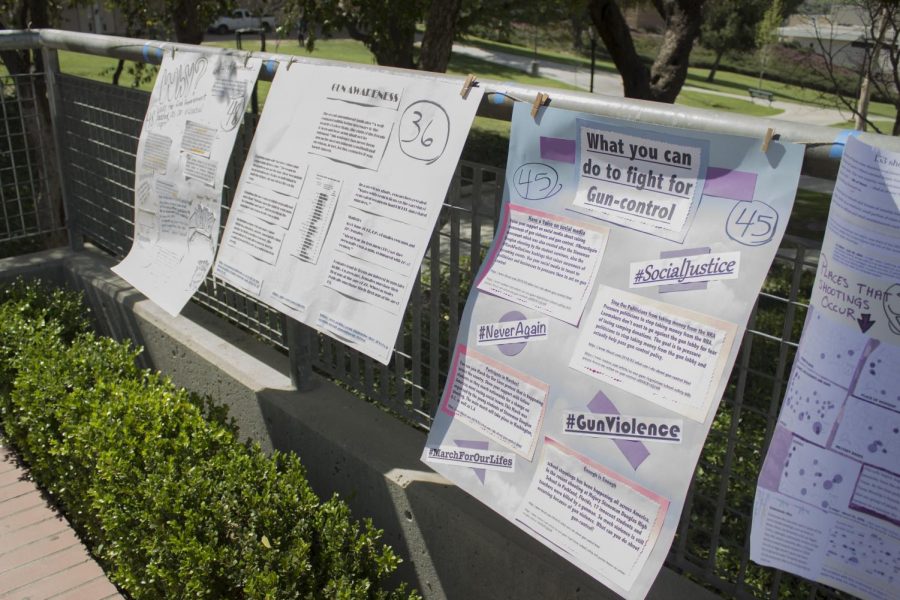Societies change on a regular basis. Certain “taboos” seem to come in and out of the closet, into the realm of acceptable. 15 years ago, getting a DUI was almost mandatory jail time; now you pay your fine and get back to your life.
Just a generation or two ago, being a homosexual was not something you wanted the town to know. Stories from years past of homosexuals getting beaten to death, were all too common. Unfortunately this is still sometimes the case in rural America.
But here in suburbia, being gay is very different. In fact, gay is so visible, society has invented itself levels of gay. Here at the Student Voice, we have scaled these levels in our Homometer (pronounced ho-mometer) to help you, the reader, be able to distinguish.
The actual percentage of the population that is gay is not really known. According to the 2000 U.S. census, the number of households that were “unmarried partners” made up 0.99 percent of the population. That number is higher than the religious-right’s conservative number of 1/2 percent, and drastically lower than the famous Kinsey study that puts the numbers at 10 percent.
A survey done by UCLA published in 2007 estimates the number of gays in the United States to be between 4.3 percent and 6.4 percent.
One major problem with surveys of this type is people who aren’t “out of the closet” don’t necessarily report what they really feel. Gay is not something people choose to be, (well, technically you can choose to try homosexual sex, but that’s not how “gay” works for most) but something that is hard-wired into someone. Nature or Nurture we don’t know, but what we do know is it can be both.
So to help those confused, the Homometer is a quick guide, but it needs some explaining.
The first level of the homometer is zero, or Asexual. For our example we have used Mother Teresa, but this could include anyone from the Dali Lama, or other people who aren’t attracted to anyone. As with most spectrum-type analysis, the results at the top and bottom of the range are far and few between, however the Student Life editor of this paper does fall under this category.
Level one takes us to “uber-straight” Chuck Norris, the man who can slam a revolving door. It has been said that Chuck Norris once appeared on celebrity Wheel of Fortune. He spun first, and the rest of the 28 min. consisted of everyone waiting around awkwardly for the wheel to stop spinning. Chuck Norris is so straight, that if he ever had sex with a man, it is because he had run out of women to have sex with.
A step up the homometer from super straight is the normal every-day guy, represented here by Tom Hanks. Everybody loves two things, parfaits, and Tom Hanks. Just a normal guy, likes women, but knows what an attractive guy looks like. Doesn’t feel attracted to them, but can tell when they’re looking at one.
Level three is a place that people have the potential to visit at one time or another in their lives. Level three is Butters bi-curious. A fan favorite on South Park, Butters is just bi-curious, and that’s ok. Maybe as simple as a thought, like, “I wonder what it would feel like if…,” or even going as far as seeing how warm the water in the spa really is, but then again, there’s nothing wrong with that.
The next step up the homometer is a level that everyone in America is exposed to every time they check out at the grocery store. Level four is the closet cases, and appropriately, our example is American Idol and talk-show host Ryan Seacrest. Smeared in every tabloid as being gay, the public really doesn’t know. These guys are so tired of dodging the questions, they don’t have a firm stance, they don’t have a girlfriend, and they dress way to in-fashion to be “not gay.” Is he or is he not? It is not the Student Voice’s place to out him without incriminating photos, but he does have our respect for being so ambiguous, which is why he makes our homometer.
Therapists, counselors, and pop icons alike will fight this step all the way to the grave. Can someone really be Bisexual? For the purposes of the homometer and the cultural “fad” or “way of life,” bisexual like lead singer of Green Day, Billy Joe Armstrong is level five. In an interview with a lesbian gay bisexual transsexual (LGBT) magazine, The Advocate, Armstrong speaks about his sexuality. “I think I’ve always been bisexual,” said Armstrong. “I think everybody kind of fantasizes about the same sex. I think people are born bisexual.” Armstrong may not be a voice of authority on the subject, but it does deserve a space on the homometer.
We are now leaving the confines of the majority of society, and beginning to break down one unique group. The next level is the gay person that you had no idea was gay until they said something. George Takei first found fame on the USS Enterprise as Sulu. He is also famous for his standup comedy and most recently his role on the hit NBC TV show, Heroes. But just by looking at Takei, you would not guess that he was gay. This is also the level the Editor-in-Chief of the Student Voice falls under.
Plastered on the cover of People Magazine, this guy made a huge announcement about something we wall already knew. In the article, Lance Bass said he kept his sexuality hidden during his N’Sync years to protect the image of the band, but, shut up, everyone could tell. That’s why level seven on the homometer is gay and anyone can tell.
A term that gets associated with gay people who dub themselves up to an extreme level to where anyone’s grandma can tell that they like men, is called flaming. Sometimes it takes a negative connotation but here, we are just describing a way of dress, like the way Elton John dresses. Anything with sequins on a man, V-necks that show your navel or even v-necks at all, tight jeans, crazy sunglasses, and the “fo-hawk.” Some or all of these together bring you to level eight on the homometer.
Level nine is only slightly above level eight. Level nine includes all of the fashion tips from level eight, but level nine ads a few key points. At level nine, we incorporate the lisp, and the hand gestures, that go along with all the fashion sense. Now, the Student Voice does not stereotype, but some may accuse. If the stereotype fits, it’s not a bad thing. That is why fashion designer Isaac Mizrahi is our representative for this level of the homometer.
As with the lower levels, the higher levels are hard to come by. Level ten on the homometer is the Fab Five. The Queer Eye for the Straight Guy crew take every kind of stereotypical gay and combine them all in one, The shopper, the fashion king, the artist, the interior design artist, and the “out-on-the-town-er.” It is rare to find one person like this, but they are out there.
So, don’t be afraid to be who you are, because the people around you aren’t going to change because you are honest. The best part is, they probably already know, they just haven’t told you yet.
“Be who you are and say what you mean,” said world-renown thinker and all around smart guy Dr. Seuss. “Because those who care don’t matter, and those who matter don’t care.”





